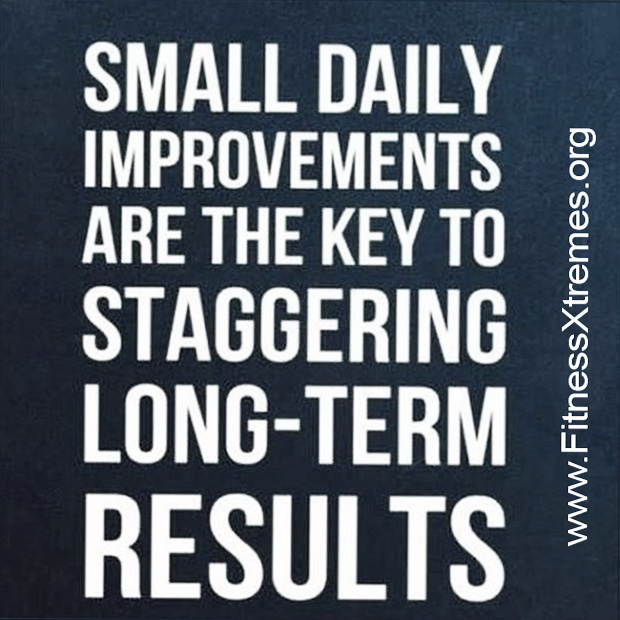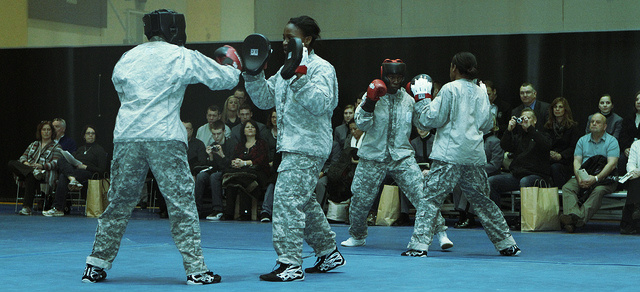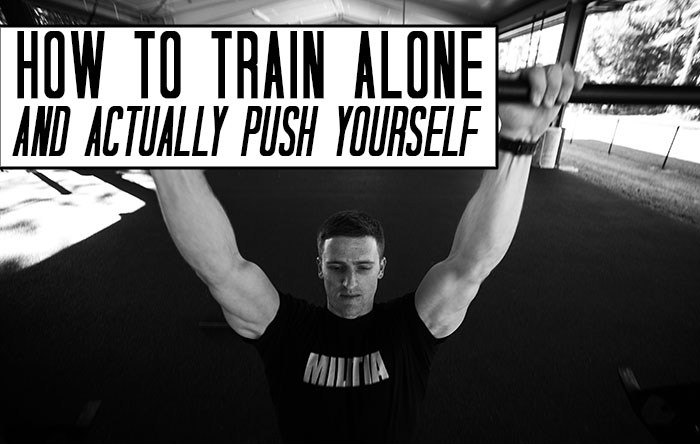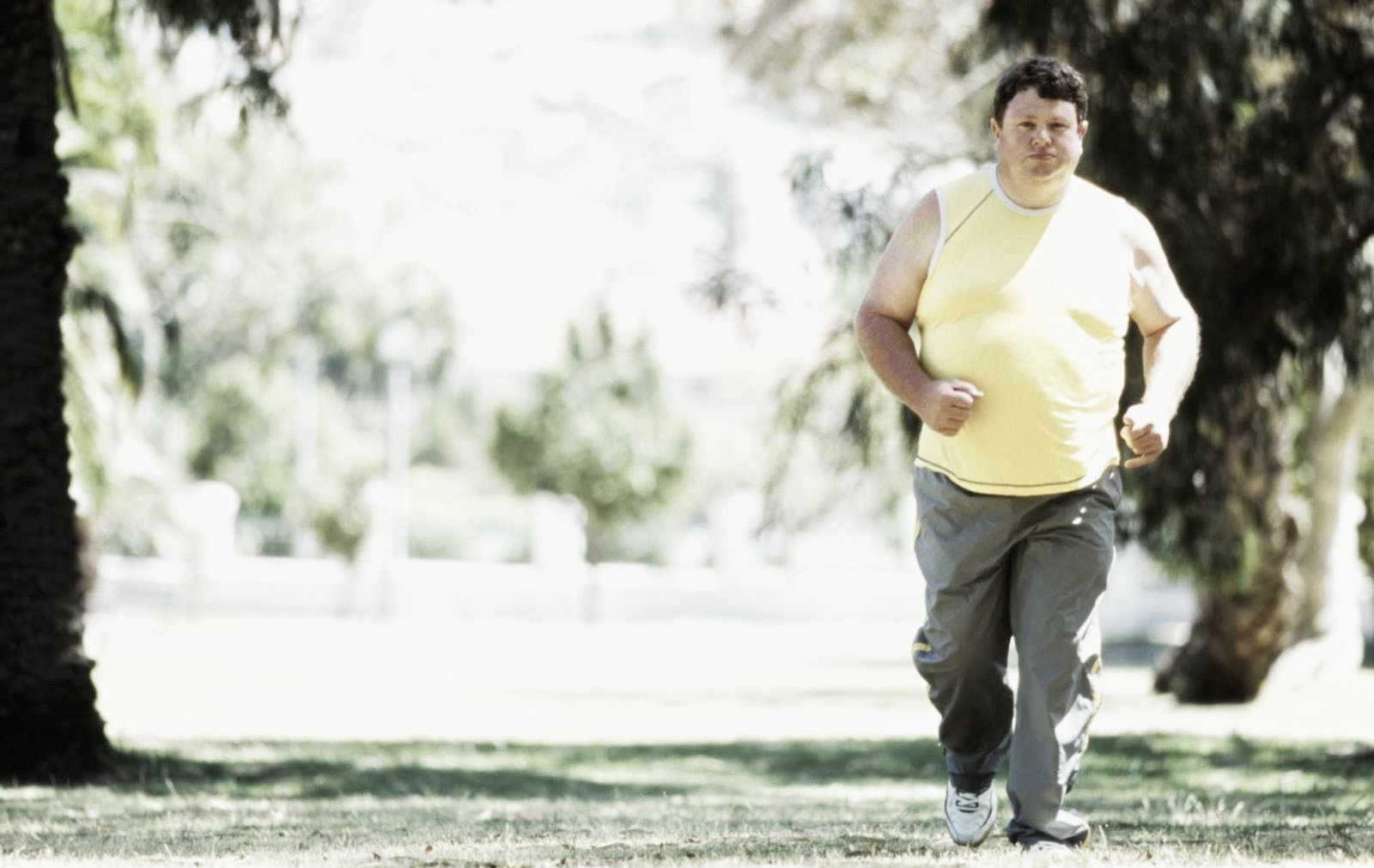Setting and meeting fitness goals is not something the average person does well. We’re pretty sure that you know this thing called “New Years Resolutions.” Yeah?
Well, of course you do.
People take stock of their lives during the last week of December. They think about all the crap they’ve done to themselves and to those they love (or hate and are sorry for). Then they resolve to make changes.

They set goals (most of the time unrealistic ones) and then they don’t follow through.
Oh sure, they decide their going to “workout more.” (Yet they aren’t specific.) They decide they’re going to get in shape. But, they have no idea what that looks like for them. They want their health and fitness to increase, but in general that just means they want a boost in self-confidence. They want to feel better about themselves.
There is no self-commitment. There is no self-accountability.
In other words, it’s just talk. Hot air. A balloon filled with helium, blown away on the wind.
That’s why in this article we want to share some scientific information on realistically setting and meeting fitness goals. Additionally, we’ll let you in on some awesome tips. These can help you take concrete steps toward meeting the fitness goals you set.
Without further ado then, immediately below is a great TEDx speech on the subject of setting goals. Furthermore, it’s about what that actually means. This is all about mindset and taking action. Also, this can actually apply to any part of your life. In other words, it’s applicable to more than just health and fitness.
Take the time to view it. At just under 9 minutes, it’s worth your while.
Four Keys for Setting and Meeting Fitness Goals
Are You Insane?
“They say the definition of insanity is doing the same thing over and over again and expecting different results.
I know waaaaaaay too many people that say “continually try to lose weight by dieting and running on a treadmill for hours.” Every time they last a few weeks and then give up. Then, they try again two months later in the same way with identical results.
If you tried to “get in shape” last year and it didn’t work, CONGRATULATIONS – you found one method that doesn’t work for you.
This year, unless you’re insane (which is certainly possible), you need to try a different method. Or, you need to attack a previous method from a different angle. Look closely at your previous failures and figure out what went wrong – learn from those failures and apply them to your upcoming goals.

If you failed because you hate running and gave up, try weight training.
If you failed to lose weight by counting calories, that might not be the method for you. Try the Paleo Diet.
Remember, those who forget history are doomed to repeat it. Don’t keep doing the same thing over and over again – if something new doesn’t work, quickly learn from it and MOVE ON.”
Track Your Progress
Do you know why video games (specifically role-playing games) are so darn fun and addicting? Because you get to watch your character constantly grow stronger/bigger/better/more powerful. Even if you only get to play a game for thirty minutes, you can still see that your hero went from Level 7 to Level 8. You can see he or she increased strength by two points. Also, he or she defeated the boss at the end of the 3rd dungeon, and so on. Every minuscule detail is tracked, recorded, and progress is easy to observe.
Games wouldn’t be nearly as fun if you had no score to count, levels to gain, or experience points to earn.
Keep track of your progress. Level up your life! Track your weight weekly, measure yourself with a tape measure to see if you’re losing inches around your waist, hips, chest, legs, etc. If you’re lifting weights, track your workouts on an excel sheet or a site like DailyBurn.
If you know what you did yesterday, you know what you have to do today to be better.”
To read the nerd boys’ full article, click on the title above or the image directly below it.
Now that we know you’re sane, hey … you watched the video! As well, you were determined enough to make it like Tron said to RAM, “This far….”
You probably would like some concrete tips to make sure you reach your fitness goals.
So … uh … keep reading to learn about setting and meeting fitness goals. The following article by Bonnie Steele, and published over at beachbodyondemand.com is just what you’re looking for.
How SMART Goals Will Help You Stay on Track
The first step to successfully setting and meeting fitness goals is to carefully define them, says Terri Babers, MA, CPC, an independent certified coach, teacher and speaker based in Fairbanks, Alaska. “‘A mistake people often make is jumping in and setting goals without clearly understanding why. You need to think about the benefits of achieving these goals and how you are going to feel when you accomplish them.’
Babers has clients examine what they love doing, their priorities, and any obstacles to making changes in their lives before diving into SMART goal setting. For example, I love yoga, but I can’t commit to a daily practice because of family and work commitments. Setting a goal to become a certified yoga instructor isn’t realistic for me, but I can make it a priority to do yoga three times a week.
‘SMART goals are easy if you are ready for action,’ says Babers. ‘But you must be open to change if you want to succeed.'”
- Make it Specific
When setting and meeting fitness goals, you need to define them in as much detail as possible. Think about the who, when, what, where, and why of each goal, and weigh the cost of achieving those parameters.
“Instead of a general goal like ‘lose weight,’ I narrowed it down to: Lose 15 pounds by working out after work three times a week. To do this, I need to commit four hours in my weekly schedule for this new activity, which will result in looking and feeling great for my upcoming high school reunion.
- Make it Measurable
Define exactly how you will measure your progress in reaching your goal. For example, since my goal is to lose 15 pounds, I’ll weigh myself every morning to see how I’m doing. For my goal to do more yoga, I’ll mark the days I go to yoga on my calendar with a big X, so I can chart my progress throughout the month.
- Make it Attainable
Try to set goals that are just a little out of your comfort zone, but still realistic, suggests Babers. “Don’t set yourself up for failure, which can lead to guilt, shame, and regret,” she says. By figuring out if you have the energy, focus, and time to achieve each goal, you can avoid setting the bar too high.
Instead of just trying to ‘eat better,’ my goal is to eat more fruits and vegetables. Because of my fairly regular hamburger cravings, I know trying to go vegetarian is not achievable. A more realistic way of hitting my goal is to incorporate more smoothies, salads, and veggie stir-fries into my diet.”
To get the rest of the tips from this article on setting and meeting fitness goals, just click on the title or image above.
Now, there are your goals for fitness, and then there are RECOMMENDED goals. Smart fitness goals that trainers suggest. Of course you don’t have to pay attention here, but we think that if you are smart (and sane) than you do.
[thrive_leads id=’135′]
The following list of recommended goals comes from fitness trainers over at womenshealthmag.com.
Trainer Confessions: 5 Goals You SHOULD Be Making (But Probably Aren’t)
“Goal #1: Lower your body fat percentage
Clients often tell me they just want to lose 5 or 10 pounds to “lean out.” (Sound familiar?) But you’ve probably heard the old “muscle weighs more than fat” line. While that’s not technically true (a pound is a pound), it is true that a pound of muscle is denser and takes up less space than a pound of fat. So if your goal is to shed pounds, you really should be aiming to lose body fat and gain (or retain) muscle. Essentially, you’re hoping to shift your body composition and lower your body fat percentage.
You can measure this in a number of ways: You can ask a trainer at your gym to test it using skinfold calipers. You can try a body-comp scale or monitor that uses bioimpedance (where you stand on or hold metal pads and a current determines your body composition). Or, you can go to a special lab for a more accurate (though pricier) air- or water-displacement test. Keep in mind that the first two options aren’t 100-percent accurate. However, as long as the measurements are done under the same general conditions, you’ll be able to get a pretty good look at your progress.
Goal #2: Get stronger
I get that you don’t want to look like Joe Manganiello, but you shouldn’t be afraid to make strength one of your goals. In fact, unless you put some crazy concerted effort into it, the typical woman will never “bulk up.” (Newsflash: You CAN be strong and skinny!) What I like about strength as a goal is that it’s much more quantifiable than “toning up,” which is what women often say when they’re describing the desire to build muscle.
Strength can be measured by the number of pushups you can do. It can be measured by the amount of weight you lift on the cable machine. Also, by the increase in reps you can handle. It’s also noticeable in daily life: The ease with which you lug your groceries or lift your suitcase into the overhead bin. And, if you want to check your progress in the mirror, find out how long it takes to see muscle definition.
Goal #3: Master a skill
Write down this goal if you’re one of those people who just doesn’t get particularly amped about running/lifting/sweating just for the sake of it. Hey, I hear ya. Sometimes you need a specific skill to hone in on. My gateway drug into fitness was a weekly adult gymnastics class that hooked me in. But if tumbling isn’t your thing (no way, really!?), just pick another sport or skill that you want to learn to excel in. You know, something like Pilates, lifting weights, or boxing. Already found your fitness muse but need an extra boost? Make specific achievement goals, such as targeting a number of chin-ups. (Can’t do a single one? Try our chin-up challenge to learn how in six weeks!) Or, try conquering a forearm stand in yoga.”
There are more tips on setting and meeting fitness goals, which you ought to be aiming for. You can read them all by clicking on the title or image beneath it directly above.
Now, there are so many inspiring quotes on setting and meeting fitness goals, and more that we didn’t have the heart to post any here. You can simply Google it. Go ahead, check out Google images, read the memes on the subject to your hearts content …
Oh. Ok. Fine.
We’ll post one. Cause, we agree with it. And we don’t want to make you go use Google.

Remember everyone, this is all about sharing info that is really useful and valuable to you. If you feel that it is, please go share on Facebook or Pinterest!











